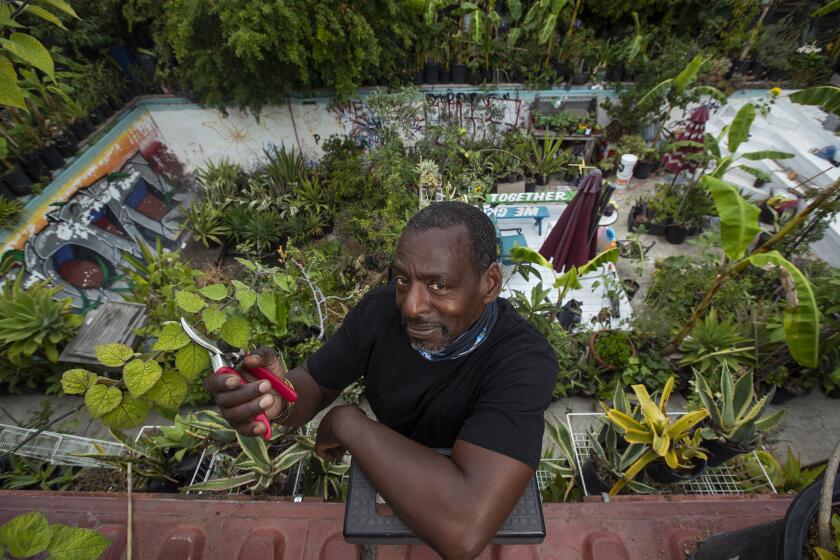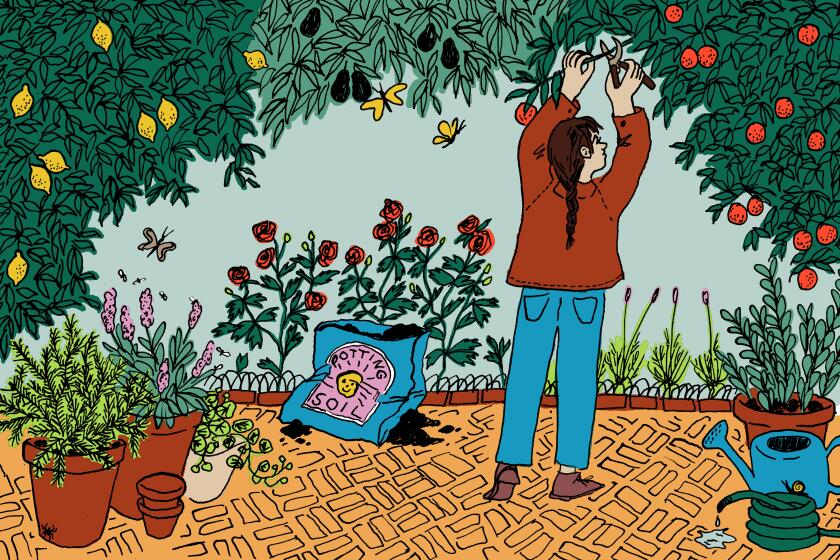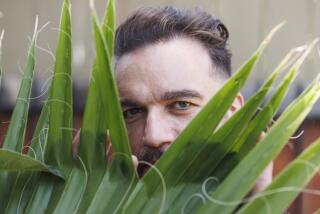She was afraid of growing food — until the pandemic pushed her to do it
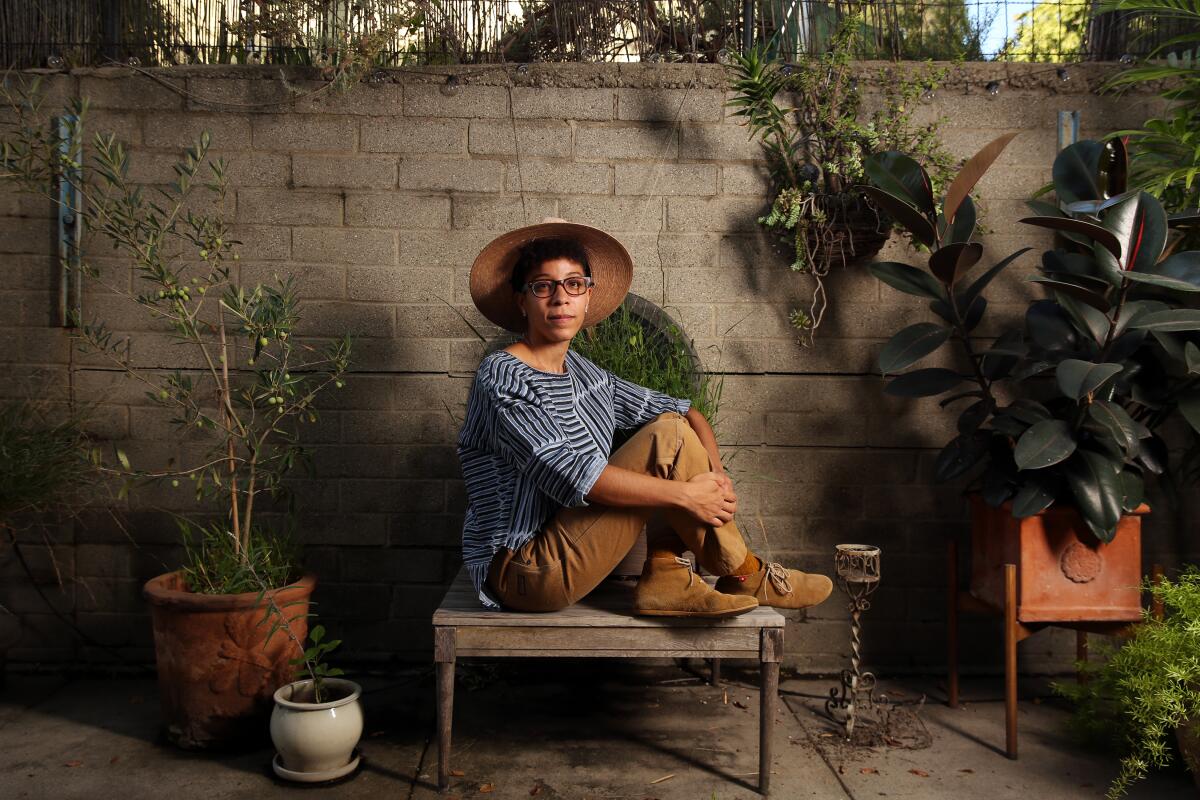
- Share via
When Jamie Renee Williams wanted to learn more about soil and permaculture, she volunteered at several urban farms throughout Los Angeles: Cottonwood Urban Farm in Panorama City, Huarache Farms in Sierra Madre and Farm L.A., located in Elysian Valley. When she wanted to implement what she was learning in the community, she began working with a community-led compost pick-up service to expand its reach. And when the coronavirus outbreak forced her to shelter in place, she transformed a tiny stretch of dirt next to her apartment into an edible garden.
“I thought for many years that it would be amazing to work on restoring it in some way,” Williams, 37, said of the garden in Silver Lake that she planted in March. “I had been reading books on permaculture such as “The One-Straw Revolution: An Introduction to Natural Farming,” and when I started going to a bunch of different farms they were all doing something different. I was afraid of growing food. I have killed plenty of plants. But the pandemic and quarantine pushed me to do it. I figured I have all this time and nothing to lose.”
L.A. gardening guru Ron Finley filmed his gardening MasterClass long before the coronavirus and Black Lives Matter protests. But his message is right on time.
Before the pandemic, Williams juggled UX design work, volunteering and helping broaden the Compostable pickup service. But with more free time on her hands — and like so many who have struggled with isolation while sheltering in place — the garden offered her an opportunity to navigate her way through the pandemic.
“I felt like I had a partner through this pandemic,” she said. “It’s been really rewarding. I have learned that plants, like people, need to be together in a community.”
For Williams, who will be offering a guided virtual tour of the garden on Thursday as part of this week’s annual LA Design Festival, the garden is “reclaimed space for everyone.”
In our Plant PPL series, we interview people of color in the plant world, including plantfluencers, plant stylists, floral artists, enthusiasts, experts and garden store owners.
“Jamie embodies that special something that makes L.A. so interesting,” said festival director Haily Zaki. “She’s a creative multi-hyphenate doing her own unique thing, her way, that kind of cannot be defined in any sort of cut and dry way, kind of like L.A.”
We spoke with Williams about the value of gardening and composting and issues of food waste. She also touches on how gardening, and being outdoors, has helped her to better understand the world in the wake of the killing of George Floyd in May.
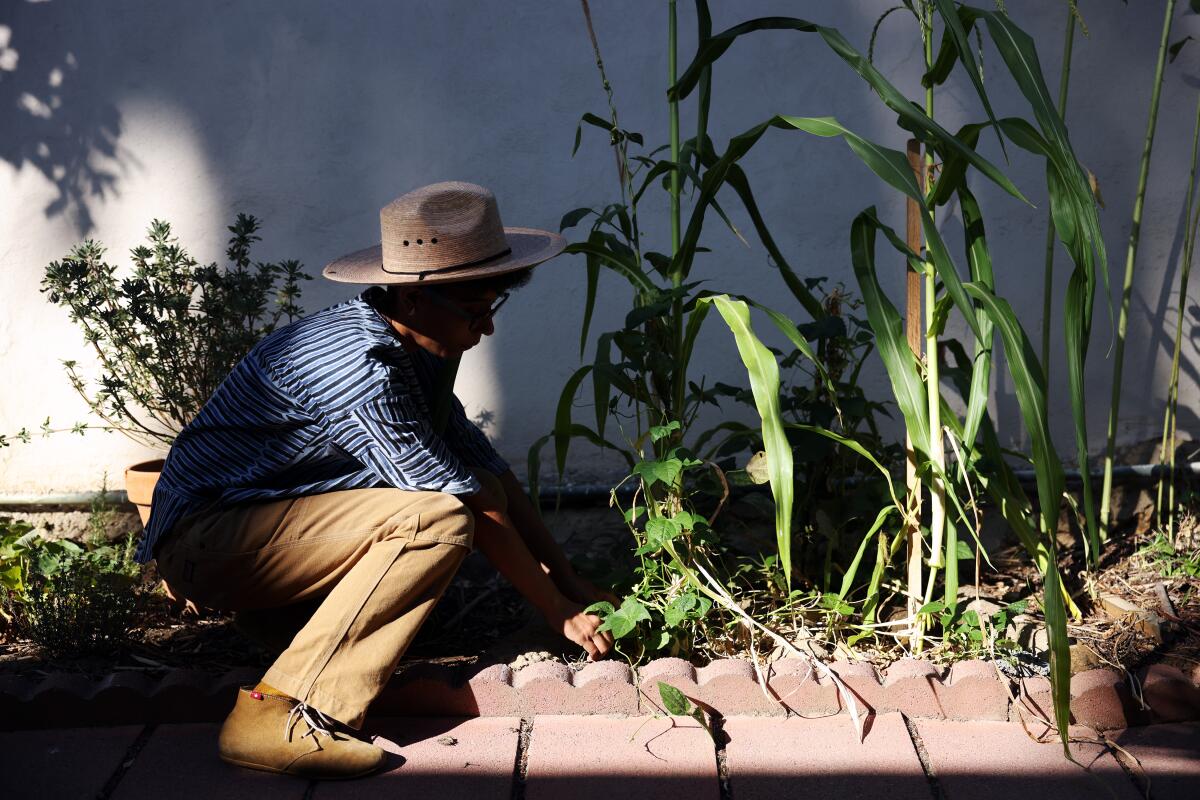
You do a lot of different things. How would you describe yourself?
To be completely honest, I have an aversion to labels. I am curious. I follow things that energize me. I like to try and learn new things. That’s my guiding philosophy. It has brought so many interesting things into my perspective. It’s probably because my childhood was very unusual.
How so?
I was born in the United States but my father was in the military so we traveled a lot. I lived in Japan from the ages of 6 to 12. When I came back to America I ended up in the South — Tennessee and South Carolina. I never fit in. My mother is Jewish and my father is Black. We all had a hard time.
Is it different in Los Angeles?
There’s not a lot of people in Los Angeles who have lived in the South. Everywhere I’ve ever been in the world, I’ve experienced racism. When I experienced racism in the South, it was more clear. People would have a Confederate flag in their car, for example. It’s much more overt than I can navigate. In Los Angeles, it’s more subtle.
We found the questions people ask most frequently about gardening and outdoor plants and went to local experts in Southern California to get some answers.
How has the death of George Floyd impacted you?
I feel anger in a way that I’ve never felt before. People are waking up to something that has been going on for 400 years. At one point I was frustrated with myself for not making white people feel guilty about race. I learned it as a kid as a protective mechanism. It’s really complex and I understand that. For me, a big part of why I have gone into gardening and growing is that it has given me space to better understand the human world.
Tell us about your garden.
It’s a tiny stretch of dirt alongside my apartment complex.
What are you growing?
I started with the Three Sisters companion planting method: beans, corn and squash. I have been growing tomatoes and basil and two types of beans (bush beans and green beans) and sunflowers. My mammoth sunflowers are 10 feet tall right now. And then there’s the stuff that popped up on its own: a beautiful cosmos plant and decorative flax. Every time I walk by, it wants me to stop and look at it. It’s from the Mediterranean. I wonder how it got here?
How did you get interested in gardening?
When I lived in Japan I lived in Okinawa, which was a Blue Zone. When you are a kid you don’t appreciate something like that. There’s a part of being outside that is deeply ingrained in me and I think I lost it for a while, being in a city and grinding. I think that I got to this place where I was feeling unhealthy. Physically, mentally and spiritually. There was some kind of deficit. When I was outside composting or farming or gardening I felt fulfilled afterward. It has been very healing for me. It has filled something and opened up something for me in many realms.
Did you have to amend the soil?
As part of the remediation, I told myself it is going to take five years. I didn’t want to bring in a lot of soil. Some of the plants are good at holding nutrients that other plants need, others are good at stabilizing the ground. It’s kind of an evolution. I also really wanted to focus on trying to build it from what it was. It needs more time. There’s not enough biodiversity. There’s a succession of plants to come. I tried to bring in some perennials like rosemary and thyme and sage that will be here for many years.
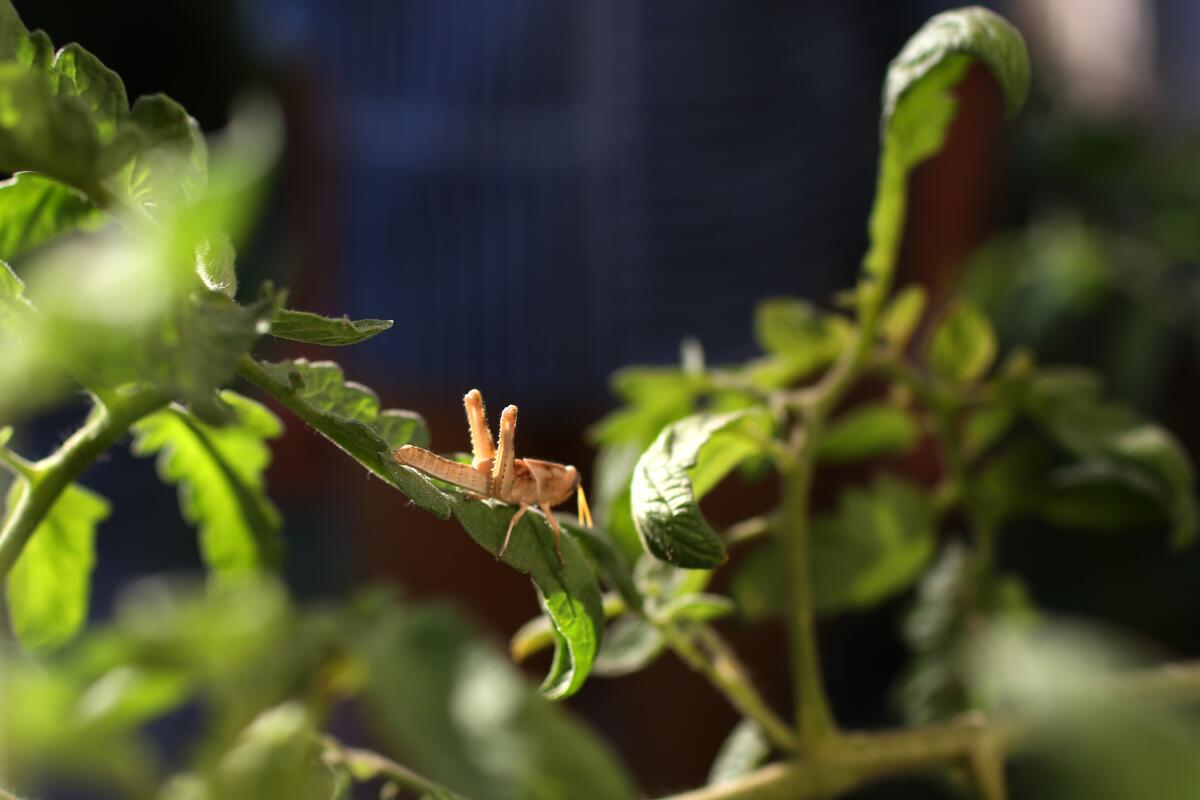
How did you get involved with Compostable?
Last year, when I was volunteering at Cottonwood, I saw Monique Figueiredo dropping off bins filled with scraps. I thought ‘What is going on here?’ I reached out to her and asked her what she was doing. She had just started a compost pickup service that was primarily on the Westside. I gave her this crazy pitch: “I have this dream where there is a massive farm, a healing space, with people of all walks of life.” I didn’t hear from her for four months. Then she reached out to me when she was ready and we expanded into the Eastside and the San Fernando Valley. We are pacing ourselves to eventually expand into Los Angeles.
At the heart of it is food waste in this city and this country, which is something like 30 to 40% of the food supply. We’re trying to divert leftover food from landfills. A lot of landfills are notorious for releasing methane and are often near neighborhoods where people of color live. [Leftover scraps are picked up and then used to nourish the soil at urban farms.]
We are very transparent. We are community composting. It’s about sustaining our local communities. Even if it’s not available, we have a wait list for our service. You can subscribe to a weekly or biweekly membership. We deliver a small bin to you that you put outside and then we drop off a clean one for you. One thing I’ve learned about gardening is to have redundancy and diversity. We then drop off the food scraps at Cottonwood, and we just added a drop-off at GrowGood in Bell.
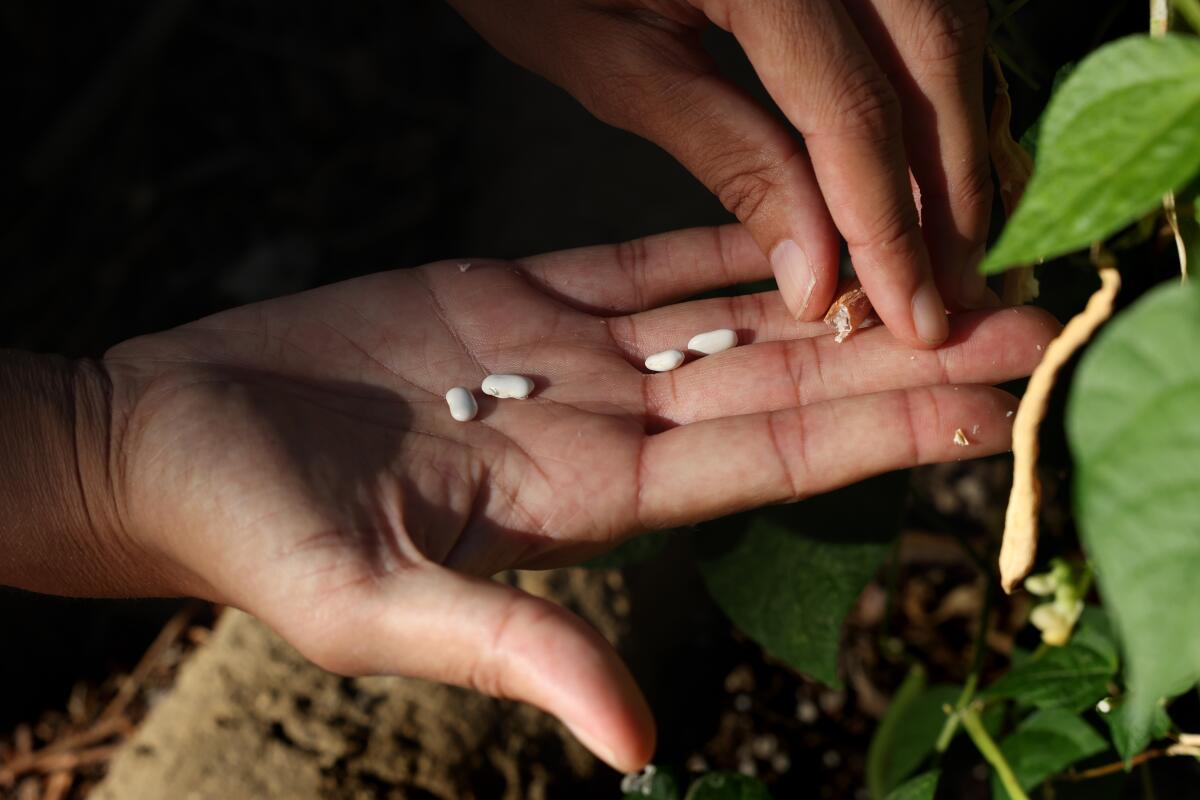
How did your neighbors respond to your garden?
I have offered it as a community space. I’ve noticed other people starting their own gardens. One of my neighbors was a photographer and he made me a zine of the garden. I was so grateful. In my mind, I hoped it would bring people together and inspire them and he, totally unprovoked, made me a zine. I thought, “I’m going to reclaim this space for everyone.” For me and everyone who walks by.
The design festival is billed as “Design for the future.” Any predictions?
I’m really thinking a lot about altruism and kindness and community. I would like to imagine a future where we have consideration of the whole and not an emphasis on just what an individual needs. It’s a farce that we can exist on our own. It’s become very clear during COVID-19 that we need people. What I would like to see in technology is technologies revolutionizing communities on a more collective scale. For me, the future is about exploring the ways that technology can be used not as a means of division but as a means of healing. It’s easy to demonize technology. Its an extension of human bias and it amplifies it on a grand scale. If that is what it is, then it can also become the things that we want.
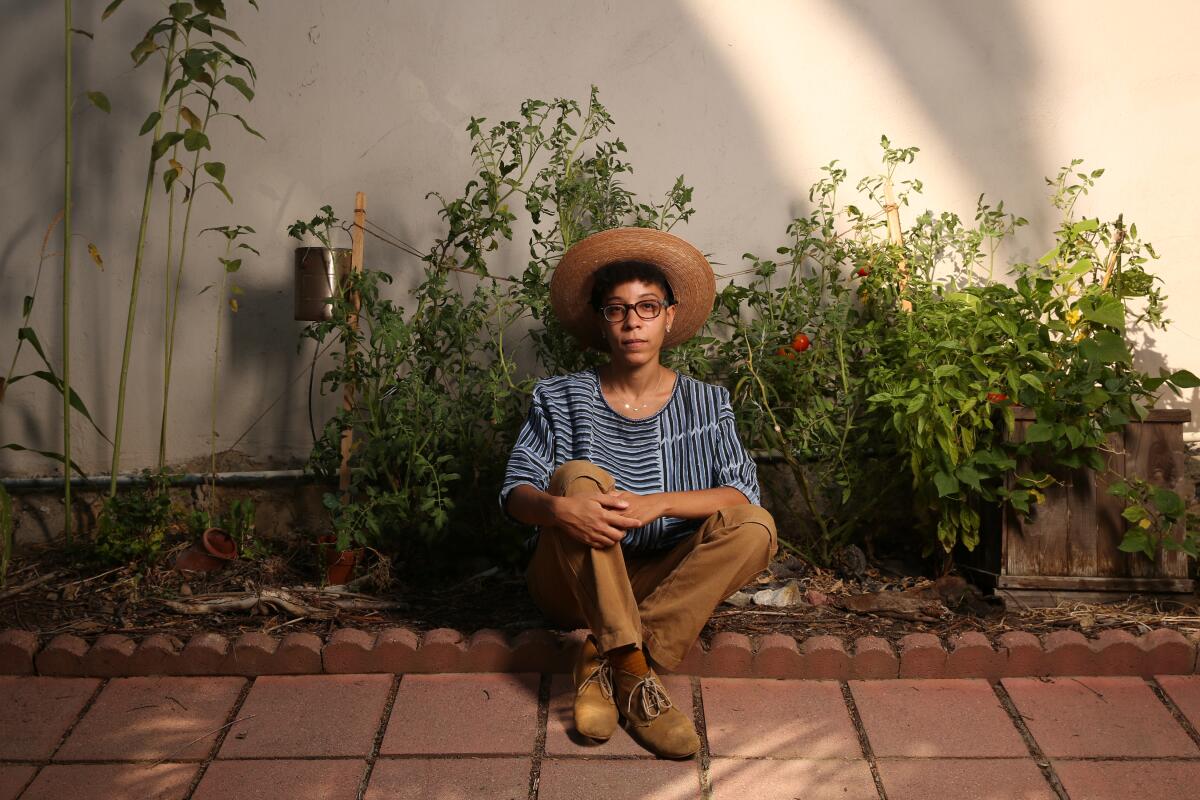
Virtual tour of Jamie Renee Williams’ garden
Where: Via the LA Design Festival
When: Sept. 24-27
Info: With the exception of some workshops, all LA Design Festival events are free and open to the public. Register at ladesignfestival.org
More to Read
Sign up for The Wild
We’ll help you find the best places to hike, bike and run, as well as the perfect silent spots for meditation and yoga.
You may occasionally receive promotional content from the Los Angeles Times.
